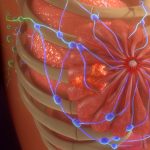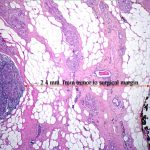Does Breast Tumor Size Matter
Does breast tumor size matter?
You bet it does and the medical and radiation oncologist want the most accurate tumor size measurements possible. As I learned years ago, accurate measurements greatly influence what kind of treatment is recommended for each specific type of breast cancer.
As you may have read in another blog on this website, breast cancer diagnostic terminology needs to be specific as possible. And the measuring technic needs to be accurate to the millimeter and reproducible. The requirement of accuracy to the millimeter is because treatment trials have determined successful treatment will be administered to some tumors that measure as an example 21 mm but not administered if it measures only 20 mm. So, one-millimeter difference in size (in this example) will determine whether chemotherapy is given or not. Because the size measurement is critical, it requires the pathologic examination of the specimen to be meticulous.
Many years ago, (in early 1970s) during my training, we measured breast lesions by squeezing the tissue until the tumor stopped our fingers, as shown in the illustration to the right. Early detection and excision of small lesions had not been perfected at that time. Needle core biopsies began at our community hospital in 1983. Many diagnostic and treatment improvements have occurred in the last 35 years.
As early detection became possible because of greatly improved mammography, the resection specimen shifted from mastectomy to limited resections or lumpectomies in many cases. The pathologist was confronted with a specimen that required much more attention. Breast surgery was shifting to a far smaller specimen to be submitted to the pathology laboratory. As smaller and smaller breast cancers were being removed in these limited resections, many new questions were being asked: does this small tumor really need chemotherapy and/or radiation? So, the size of the tumor became more and more critical and it was the pathologist who responded: critical tumor measurements became mandatory!
Our breast team formed in January 1986 and at that time it became very apparent to the pathologists that they needed to step up and perform higher level of analysis than we had done before. We immediately began submitting all of the lumpectomy specimen. As illustrated to the left, the entire specimen was sliced and submitted carefully. A diagram of all slices submitted was tabulated and where tumor was present was documented on the diagram. We measured the tumor with an ocular device attached to the microscope. Now we could measure each three-dimensional axis and do it to the millimeter. With this technic, we provide a three-dimensional size of the excised tumor.
In our pathology laboratory, the treating physicians, mostly surgeons, medical and radiation oncologists (the breast team) know the breast specimen will be carefully and methodically examined by a committed group of pathologists. North Houston Pathology Associates always tries to do more than what is expected for our physicians and their patients.



